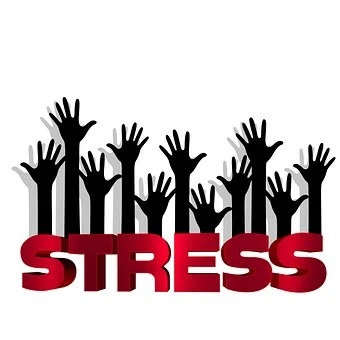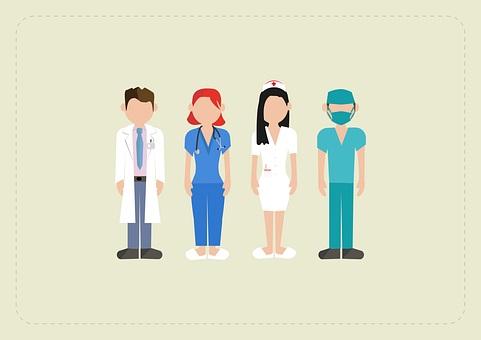Healthcare organizations are the front line in containing and defeating the Covid-19 pandemic. Within these organizations, the front line soldiers are the caregivers who provide care directly to the patient. HR is part of the front line “army” but is generally one step removed from the front line action. While not direct care givers, what can and should the HR department be doing to support those who are directly engaged in providing care? How should the management of the organization be reacting to manage and reduce healthcare provider stress?
If we stay with the military analogy, we know that the success of the front line always depends upon the logistics and support behind it. Many military battles have been lost because of failure of logistics: inadequate supply lines-whether arms, food, mechanical parts, medical supplies. The same is true in healthcare. The front line interaction should be the moment of truth and every non-caregiver should be supporting that moment.
Increased employee stress levels
An article in HR Executive highlighted the increased employee stress level related to Covid-19. Nearly 7 in 10 workers claim the coronavirus pandemic is the most stressful time of their professional career—even more than major events like 9/11 and the 2008 Great Recession, according to mental health provider Ginger. Every demographic, including adults over the age of 55, rated COVID-19 as the most stressful time. Overall, 88% of workers reported experiencing moderate to extreme stress over the past 4-6 weeks.
These statistics apply to workers in all industries including many who are not at work and are not considered essential. While their increased stress level is real, imagine what it must be among healthcare providers whose job requires that they interact directly with those who are suffering from Covid-19.
Stress among healthcare providers
There are dozens of articles now on the internet discussing the increased stress experienced by healthcare providers due to Covid-19. Almost every article gives the same advice to healthcare organizations: provide counseling and employee assistance programs. Check it out yourself–the number one theme of most of the information on dealing with the increased stress level among healthcare professionals is to provide counseling and EAP services.
I am not here to minimize the value of employee assistance programs. In fact, every organization I have worked for had a robust employee assistance program. Each one of these utilized outside professional counseling and assistance. I would agree that this form of assistance is absolutely essential. Personal stress for the provider can include multiple sources: concerns related to exposure risk at work, increased patient acuity/care requirements, staffing shortages, equipment and supply issues. The provider also comes to work with the same personal issues that are stressing the general population: spouse unable to work, children at home or child care issues, financial, possible increase exposure risk due to occupation of caregiver.
Employee assistance programs are essential. There are professional organizations that have expert counseling skills and strategies for reducing stress levels. They can share proven techniques for coping. However, is it enough to provide outside help for your staff? Is it enough to send out a memo reminding staff that employee assistance is available? What should HR be doing and how should management be reacting to increased stress among healthcare providers?
Real time actions that management can take
It would be real easy for staff to get cynical during this pandemic if they don’t see you providing real time support. This is not a time for management to practice social distancing from the front line! The last thing they need to see is that you have farmed out their stress to a third party.
Here are some very practical and real world steps HR and management should take to support their caregivers on the front line:
- Be visible. Management and HR staff should be making rounds on the floors. No one is suggesting you enter patient rooms, but the staff need to see that you are concerned about their environment and what is happening in their work area. Afraid to visit the floor because you might be at increased risk? That would suggest that you are not very confident about your isolation processes. You have unit coordinators/clerks and others who work on the floor who may not be direct caregivers. My guess is that you don’t require direct caregivers to use a separate cafeteria or separate restrooms so don’t isolate administration from your staff. Take recommended personal precautions but administration and management need to be visible in the care setting.
- Seek out input from the front line caregivers. This does not mean sending out a memo reminding staff that you have an open door policy. It does not mean you use blast email to encourage staff to use your excellent suggestion program. That is a passive approach and leaves the onus on the caregiver to make the first move. Actively seeking input from the front line means that you take the initiative to go to them and solicit their concerns, issues and suggestions. Your goal should be “bottom up” rather than “top down” communication.
- Formalize your rounding/communication program. I really mean take a systems approach to obtaining front-line input. Auto manufacturers get consistent results by building cars the same way each time. Don’t leave the success of your staff interactions to happenstance–make sure you get the results you are after. In the post “Are You listening? 4 Ways to Improve Upward Communication ” I describe how to establish a rounding program that solicits front line concerns, issues, and suggestions and guarantees response within 24 hours.
- Respond to every issue. You are not listening to the concerns of front line providers or soliciting their suggestions just so they can “blow off some steam”. Your rounding should not be viewed by you as some sort of organizational safety valve. In the previous item I linked to a post the describes a program that records the employee’s concerns/suggestions, communicates these to the rest of management, and gets a response from the appropriate manager within 24 hours. Who knows the front line issues the best –someone in the C Suite, or the one doing the work on the front line?
- Act on their behalf. Actions speak louder than words. If the concern is short staffing or lack of equipment, what immediate actions are being taken to resolve the issue? If suggestions are made, are they fast-tracked or lost in the bureaucratic approval jungle? Staff understand that not all issues can be resolved by waving an administrative wand, but do they see you doing something?
- Examine work processes. Of course I always preach this. I have several other posts on this favorite subject, but here is one, “Why Productivity Program Belongs in HR“. However, this is a time when it should be evident that there is focus not only on employees, but also on the work that the employee is being asked to do. Are the work processes of direct patient care as efficient as possible? Are they as safe as possible? Are there redundant steps that put caregivers at increased risk or involve more caregivers than should be required? How about cycle time? Reducing cycle time reduces potential exposure.
- Have some fun. Find some reasons to celebrate. Some of the best activities are the surprise events. Pizza delivered to the unit. Ice cream sundaes/floats. Popcorn. Chair massages. Greeting staff at the entry doors early in the morning or sending the night shift home with some encouragement. Appreciation notes from managers. Celebrate everything!
My people or their manager?
Taking these basic steps puts you in the arena that the direct caregiver is in by making their concerns your concerns. Administration (including the HR department) are not farming their responsibilities out to an outside EAP contractor. They are demonstrating that they are there to help. The front line is the most critical part of any healthcare organization. Every dollar is earned and every principle of your mission statement is fulfilled when someone does something to a patient. The rest of the organization and entire management structure exists to support that moment.
Management should be there to remove the roadblocks for those providing direct patient care. Many managers discuss the employees in their area as “my people”. Would it be better if the employees viewed the manager as “their manager? Who works for who?
Right now it is popular to say that “we are all in this together”. Make sure this is true in your organization!






